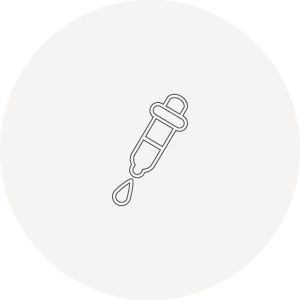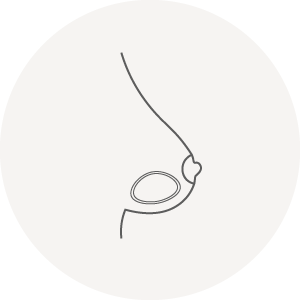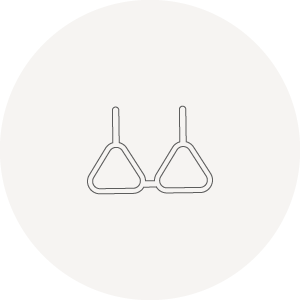How is a breast enlargement with implants planned?
We plan the breast enlargement using test implants in front of the mirror so that you can see exactly how your enlarged breasts may look. We do not perform computer simulations because they are never as authentic as looking in the mirror. Only after we have jointly selected the size of the implant do we determine the important aspects of the profile (round or anatomical) and the placement of the implants (above or below the muscle).
The most common misconceptions
Breast enlargement with silicone gel-filled implants is one of the most common procedures in aesthetic surgery. Women who wish to undergo breast enlargement should be well informed about the procedure and the possible risks and complications involved.
Patients often confront me with a number of misconceptions. In many cases, I can give reassurance, for example:
- Silicone gel-filled implants do not cause breast cancer. However, in recent years, breast implant-associated anaplastic large cell lymphoma (BIA-ALCL) has come into scientific focus, with an estimated likelihood of occurrence between 1 in 1,500,000 and 1 in 3,000,000.
- There are no allergic reactions to silicone.
- Quality implants do not burst on airplanes.
- Quality implants have no limited lifespan and therefore do not need to be replaced after several years.
- Silicone gel-filled implants do not interfere with routine mammographic examinations.
- The ability to breastfeed is generally maintained after breast enlargement, with only rare exceptions.
- It is possible to use B-Lite lightweight implants (approximately 30% lighter than conventional breast implants), which are particularly interesting for physically active women.
Furthermore, before a consultation, you should familiarize yourself with certain details (such as the shape or placement of the implants) so that you can actively participate in the surgical planning.
The shape of the implants
There are round and teardrop-shaped implants, and it is even possible to order custom-made implants. Round implants emphasize the décolleté, while teardrop-shaped implants are also referred to as “anatomical” implants and appear more natural, especially when a pronounced décolleté is not desired.
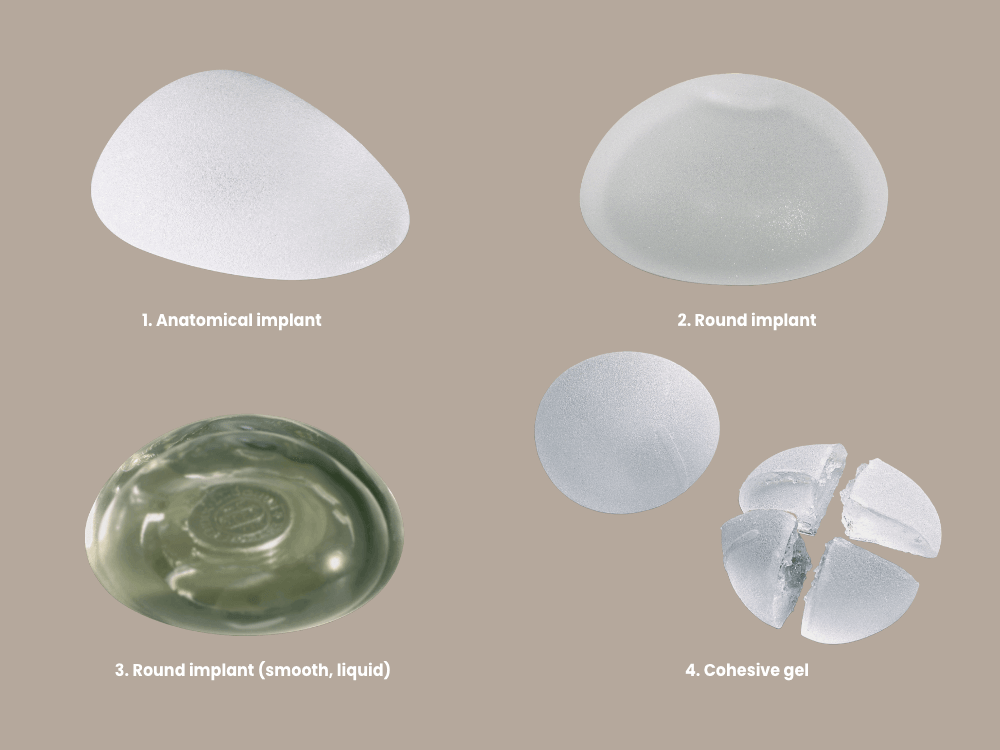
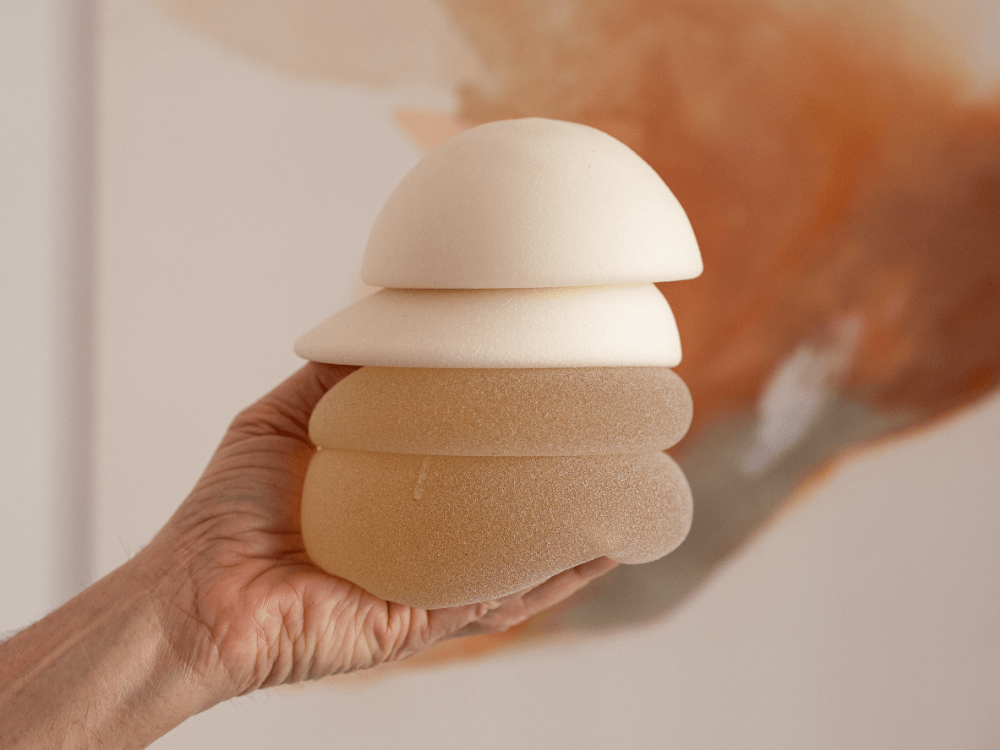
Round implants
Round implants have an even volume distribution (like a half-sphere).
Teardrop-shaped implants
With teardrop-shaped implants, more volume is concentrated in the lower part.
Where should the implants be placed?
To ensure that a breast enlargement is not immediately recognizable as such, the implant must be completely surrounded by a soft-tissue covering. If the existing breast is not very small (from cup size B), the implant can often be placed above the chest muscle. If the existing breast is rather small (smaller than cup size B), the implant is usually placed under the muscle to ensure better coverage. Both placement options have advantages and disadvantages, which should be discussed with your plastic surgeon.
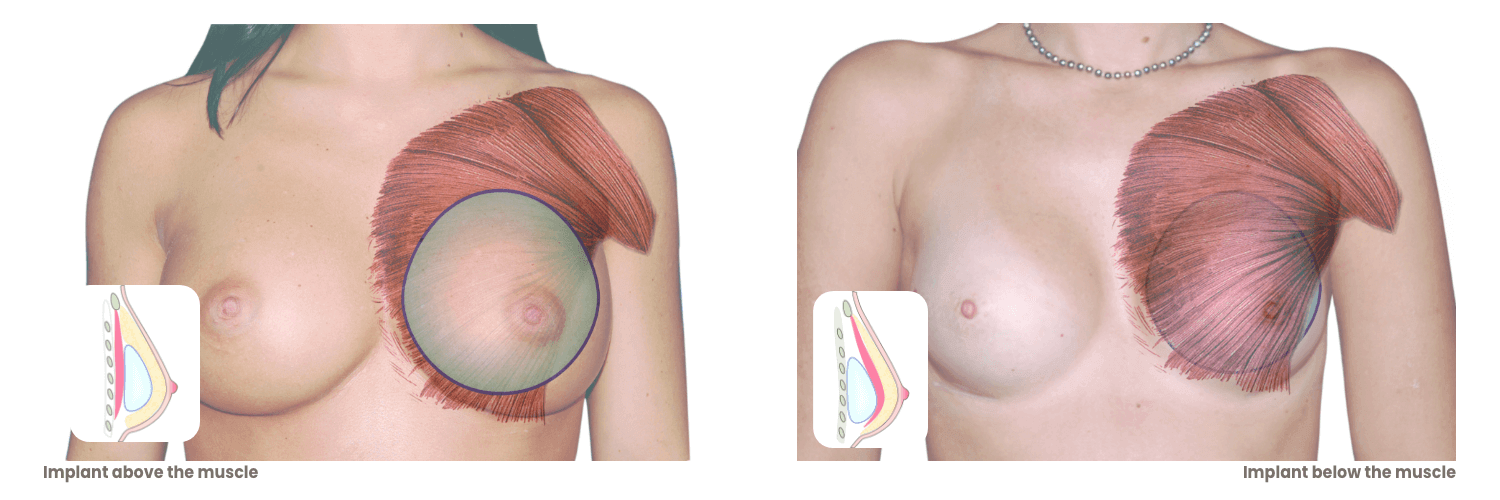
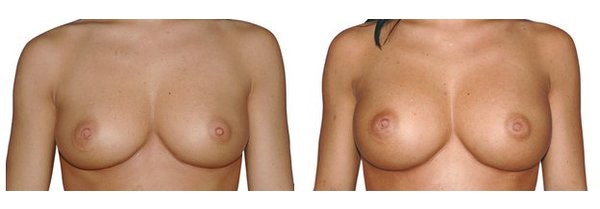
Breast enlargement with placement of anatomical implants above the muscle, 250 g each side, access via the inframammary fold.
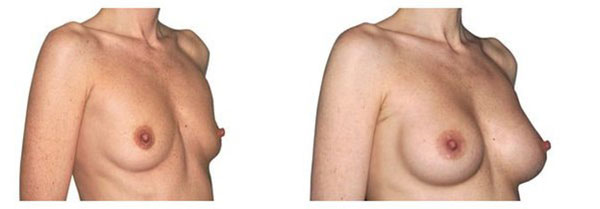
Breast enlargement with placement of the implants under the muscle. More before-and-after photos of breast enlargement can be found further below.
Which access route?
There are three surgical access routes for breast enlargement: armpit, inframammary fold, and areola.
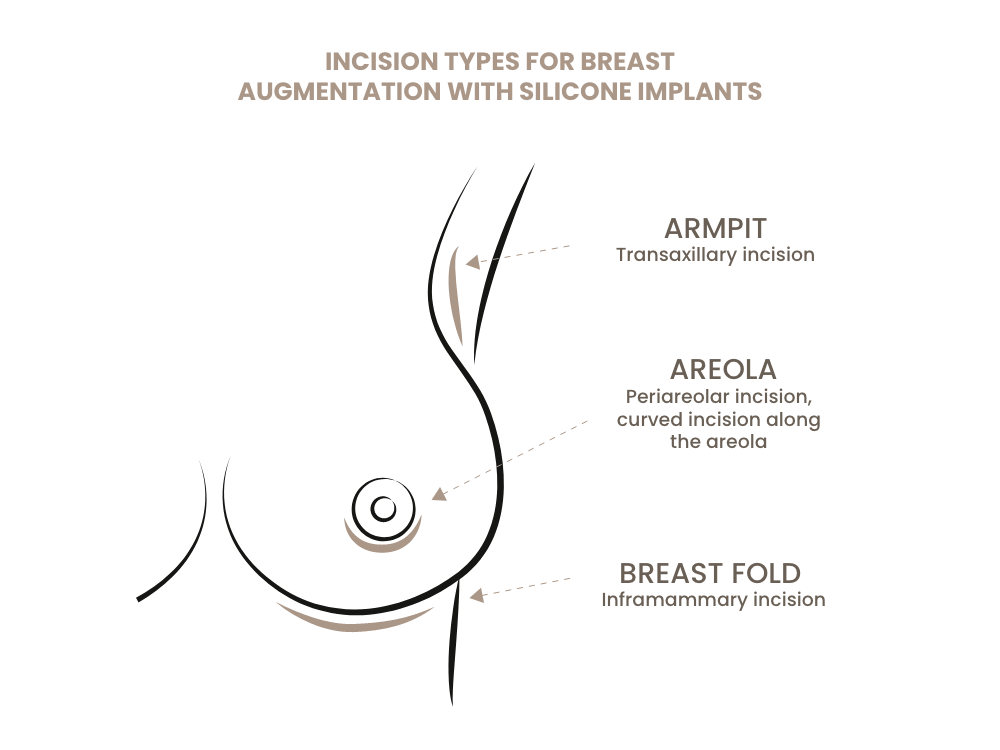
In contrast to the question of implant placement, this question cannot be answered medically. Each access route has its advantages and disadvantages, which your surgeon should explain to you in detail. Every woman should be free to choose the access route herself, and the surgeon should master all three techniques. Ultimately, what matters most is where the approximately 4 cm long scar will bother you the least.
Every breast enlargement acts like a magnifying glass on the appearance of the breasts. Therefore, minor asymmetries, shape anomalies, and slight positional differences of the nipples become much more noticeable after the procedure than before. Unevenly sized or positioned areolas, for instance, become far more visible after a breast enlargement and should therefore be considered in the surgical plan. Likewise, size differences should be compensated for by using implants of different volumes.
Sagging breasts of a certain size can only be insufficiently lifted through breast enlargement alone. The rule applies: “What sags before, sags afterward as well.” In almost all cases of sagging breasts, a simultaneous breast lift should be considered.
Pregnancy generally has a negative effect on the surgical outcome, as breast sagging can be expected. Significant weight fluctuations can also affect the results of the surgery.
As a wonderful alternative to breast enlargement with implants, a completely natural breast enlargement using autologous fat is highly suitable.



